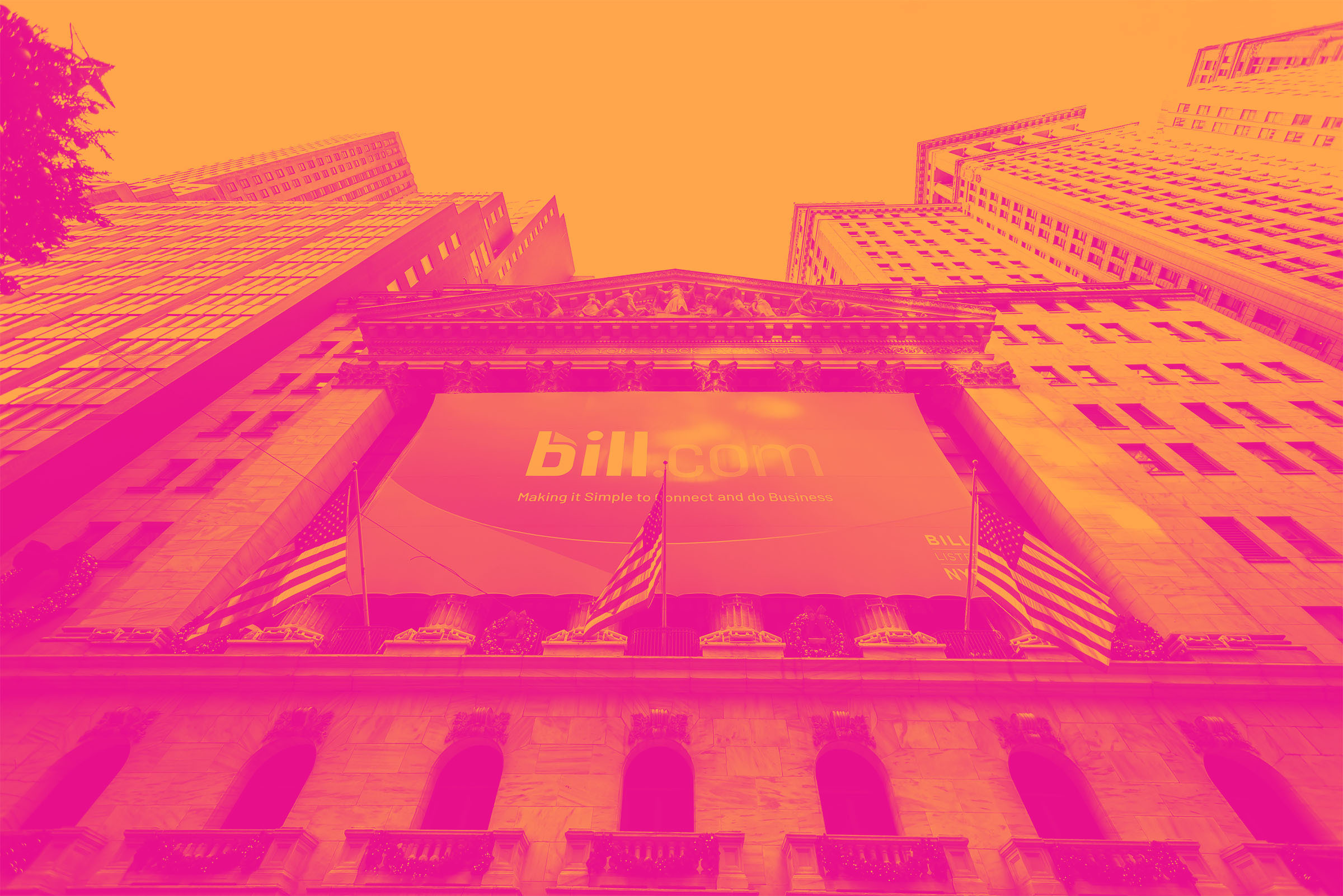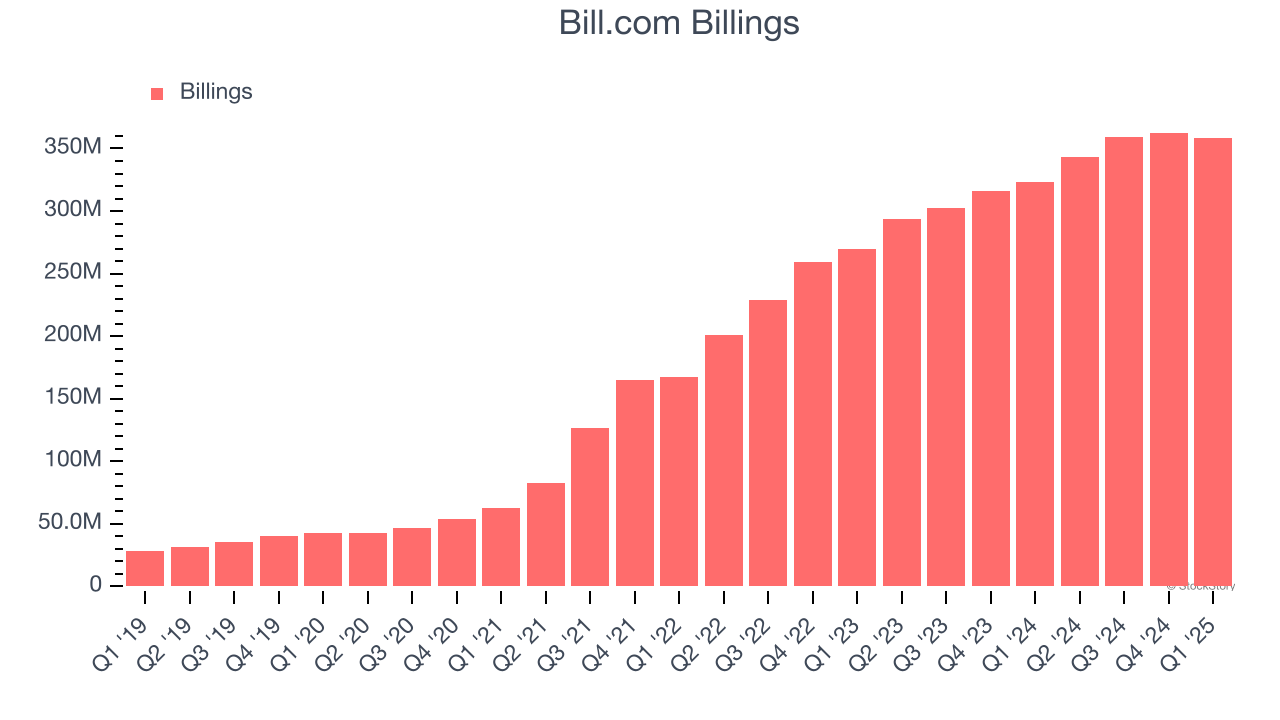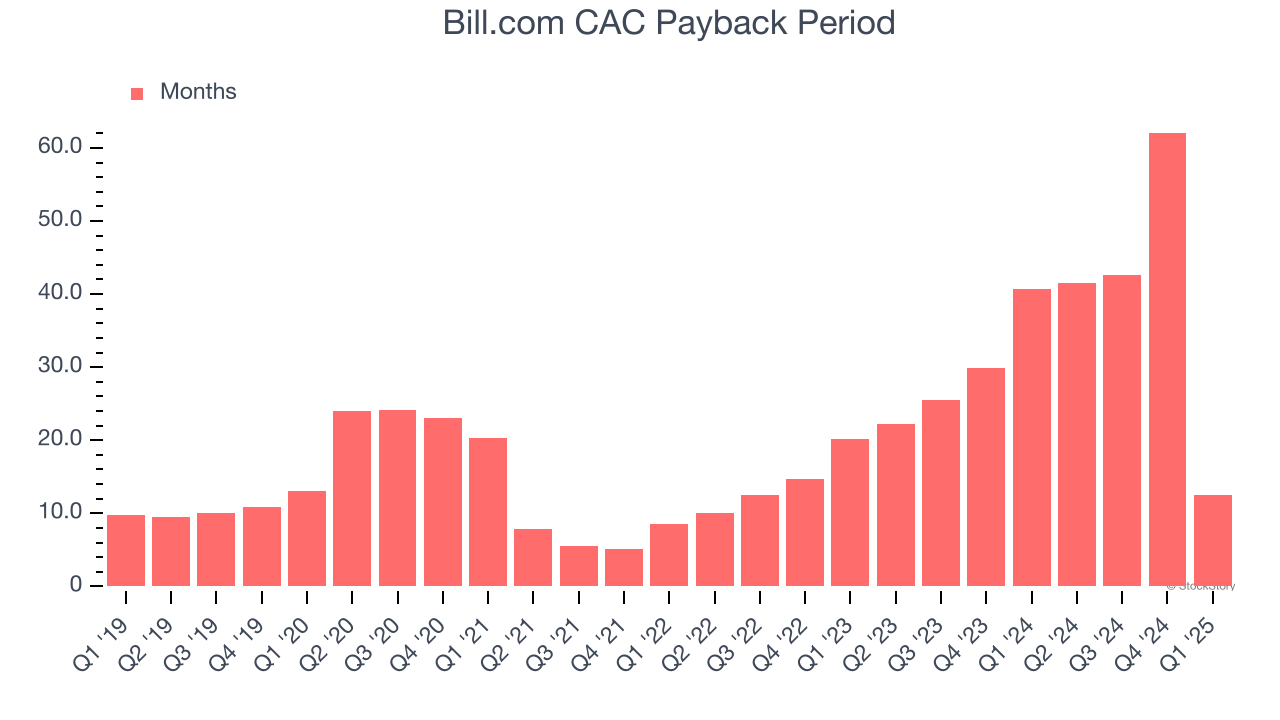
Bill.com has gotten torched over the last six months - since November 2024, its stock price has dropped 52.2% to $44.40 per share. This might have investors contemplating their next move.
Following the drawdown, is this a buying opportunity for BILL? Find out in our full research report, it’s free.
Why Does BILL Stock Spark Debate?
Started by René Lacerte in 2006 after selling his previous payroll and accounting software company PayCycle to Intuit, Bill.com (NYSE: BILL) is a software as a service platform that aims to make payments and billing processes easier for small and medium-sized businesses.
Two Things to Like:
1. Billings Growth Boosts Cash On Hand
Billings is a non-GAAP metric that is often called “cash revenue” because it shows how much money the company has collected from customers in a certain period. This is different from revenue, which must be recognized in pieces over the length of a contract.
Bill.com’s billings punched in at $358.2 million in Q1, and over the last four quarters, its year-on-year growth averaged 15.3%. This performance was solid, indicating robust customer demand. The cash collected from customers also enhances liquidity and provides a solid foundation for future investments and growth. 
2. Customer Acquisition Costs Are Recovered in Record Time
The customer acquisition cost (CAC) payback period measures the months a company needs to recoup the money spent on acquiring a new customer. This metric helps assess how quickly a business can break even on its sales and marketing investments.
Bill.com is extremely efficient at acquiring new customers, and its CAC payback period checked in at 12.6 months this quarter. The company’s rapid sales cycles stem from its strong brand reputation and self-serve model, where it can onboard many small customers with little to no oversight. These dynamics give Bill.com more resources to pursue new product initiatives so it can potentially move up market and serve enterprise clients, which can provide a second leg of growth. 
One Reason to be Careful:
Cash Flow Margin Set to Decline
If you’ve followed StockStory for a while, you know we emphasize free cash flow. Why, you ask? We believe that in the end, cash is king, and you can’t use accounting profits to pay the bills.
Over the next year, analysts predict Bill.com’s cash conversion will fall. Their consensus estimates imply its free cash flow margin of 22.3% for the last 12 months will decrease to 16.3%.
Final Judgment
Bill.com’s merits more than compensate for its flaws. After the recent drawdown, the stock trades at 2.9× forward price-to-sales (or $44.40 per share). Is now the right time to buy? See for yourself in our in-depth research report, it’s free.
Stocks We Like Even More Than Bill.com
The market surged in 2024 and reached record highs after Donald Trump’s presidential victory in November, but questions about new economic policies are adding much uncertainty for 2025.
While the crowd speculates what might happen next, we’re homing in on the companies that can succeed regardless of the political or macroeconomic environment. Put yourself in the driver’s seat and build a durable portfolio by checking out our Top 6 Stocks for this week. This is a curated list of our High Quality stocks that have generated a market-beating return of 176% over the last five years.
Stocks that made our list in 2020 include now familiar names such as Nvidia (+1,545% between March 2020 and March 2025) as well as under-the-radar businesses like the once-small-cap company Comfort Systems (+782% five-year return). Find your next big winner with StockStory today.






